Platypus also known as duckbill platypus is a semi-aquatic, egg-laying mammal indigenous to eastern Australia. It is one of the few mammal species that can produce and deliver venom. Like other egg-laying mammals, it also uses electrolocation to prey in cloudy water.
The most distinctive features of the platypus are a duck-like bill, otter-like feet, and a beaver-like tail. When the first scientist examined its preserved body in 1799, he considered it a fake combination of several animals sewn together.
Platypus Animal Facts
Scientific Classification Of Platypus
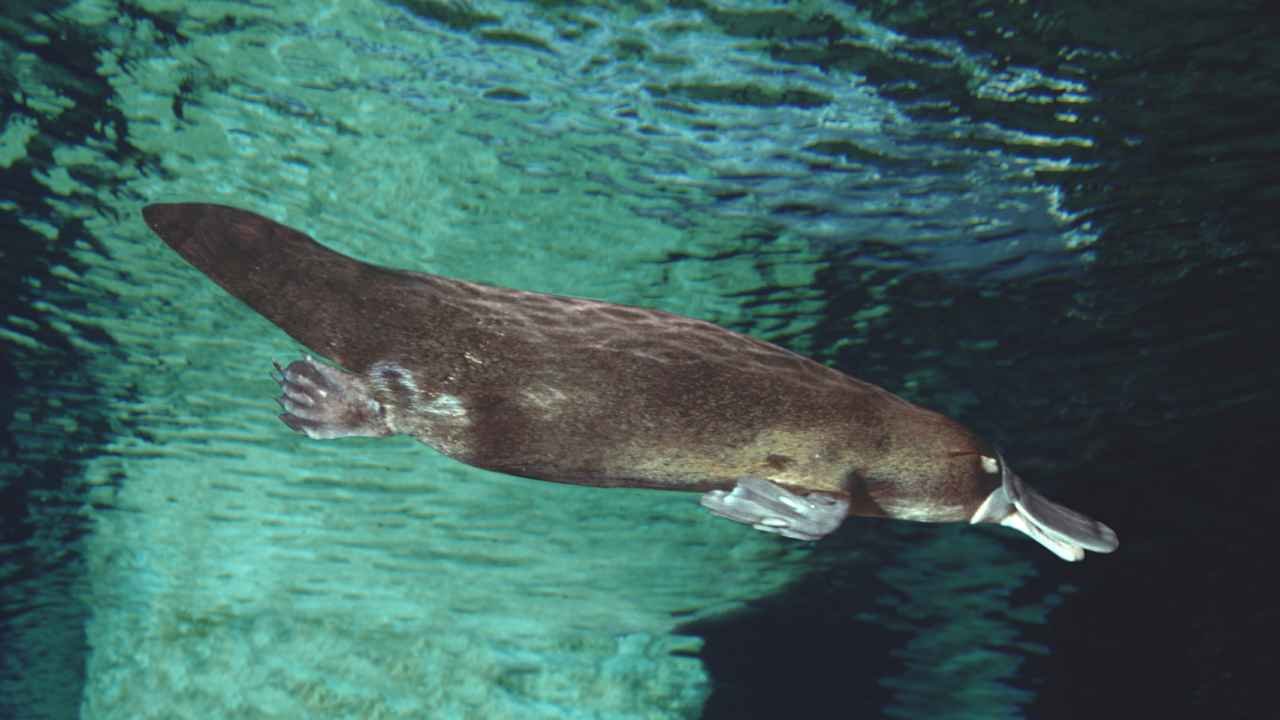
The following is the scientific classification of platypus:
- Kingdom: Animalia
- phylum: Chordata
- Subphylum: Vertebrata
- Class: Mammalia
- Order: Monotremata
- Family: Ornithorhynchidae
- Genus: Ornithorhynchus
- Species: Ornithorhynchus anatinus
Physical Characteristics Of Platypus
The following are the main physical characteristics of platypus:
Body Structure
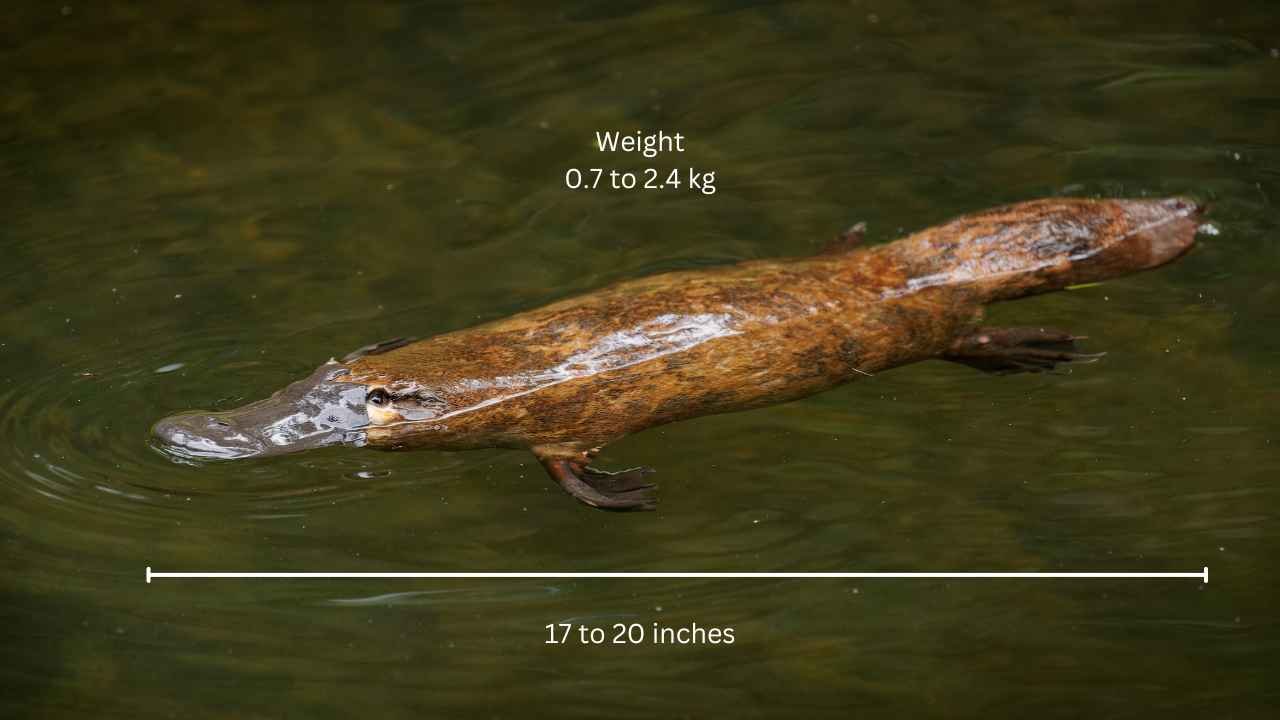
Platypus has a streamlined body with a stocky build. Their body size ranges from 17 to 20 inches and weighs from 0.7 to 2.4 kg. They have a broad flattened tail, which they use for swimming.
Fur
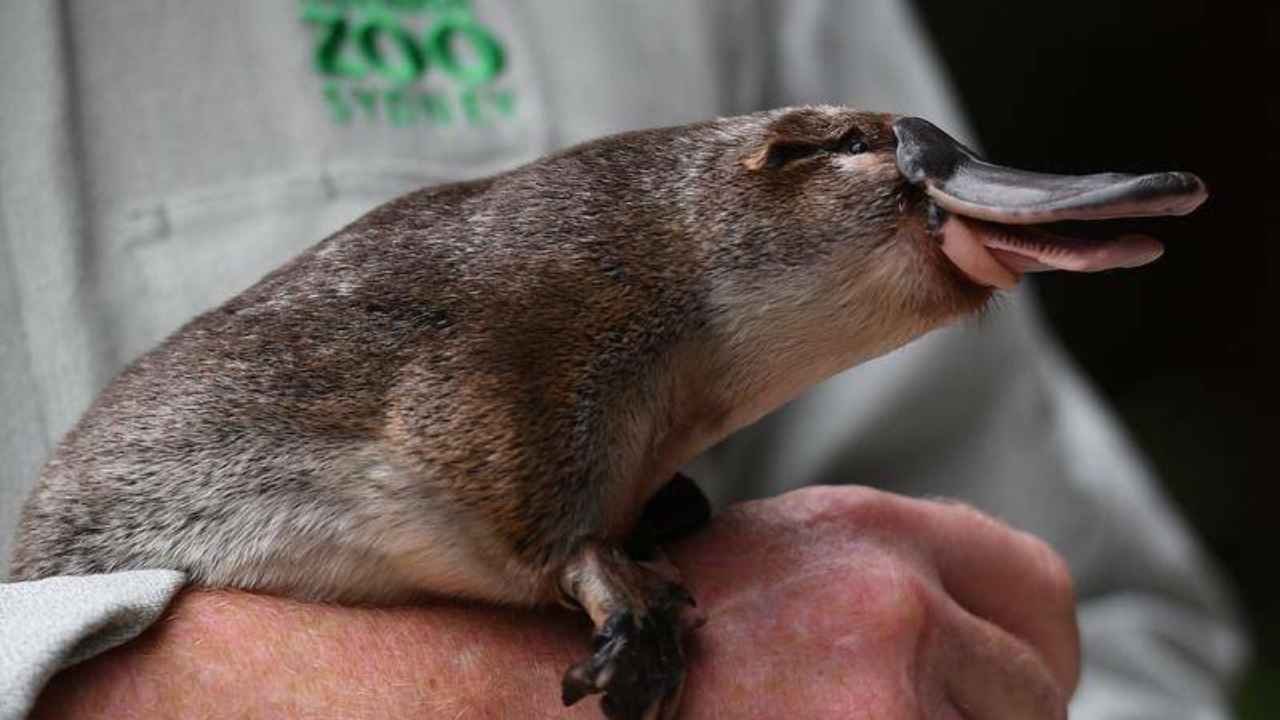
Platypus has a dense coat of fur with dark brown color on the back and sides and lighter on the underside. The fur is waterproof and remains dry when they swim.
Webbed Feet
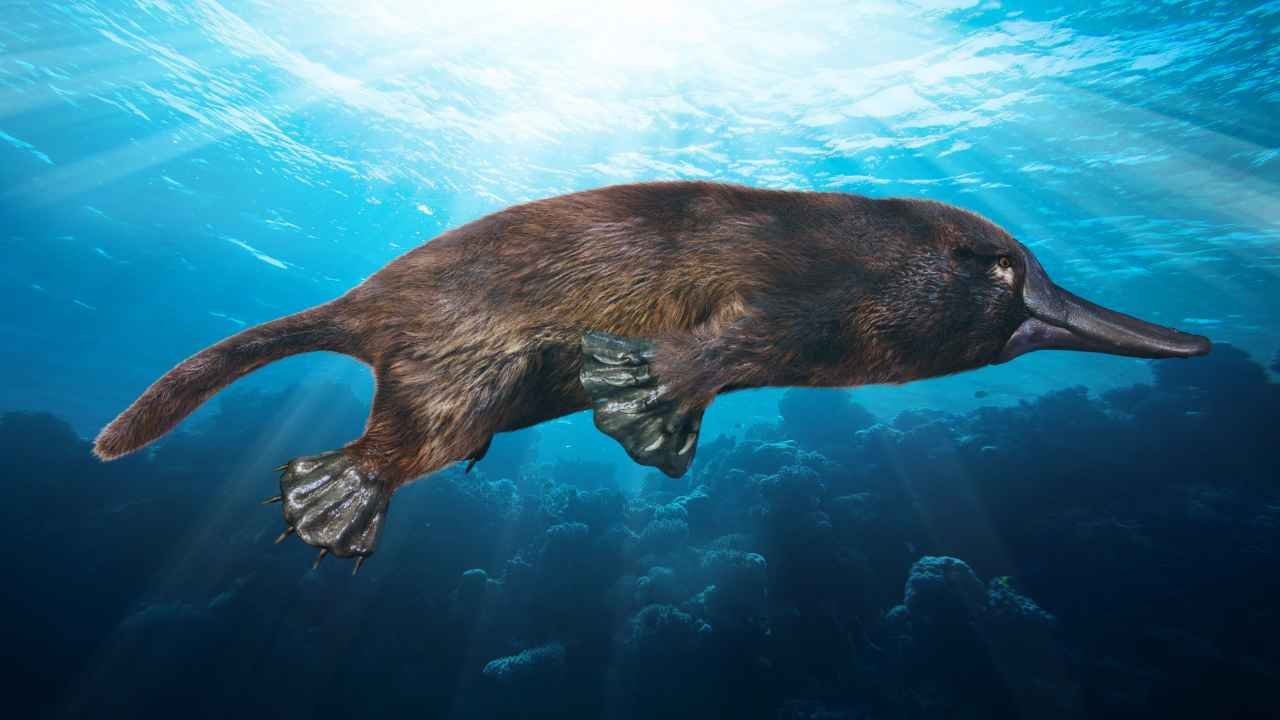
Platypus have webbed feet like otters, well-adapted for their semi-aquatic lifestyle. Their feet are webbed at the toa that aids in swimming and have sharp claws at the front.
Bill

Platypus have flat duck-like bills. Their bill is covered with sensitive skin that has electroreceptors, which can detect electric signals generated by the nerves and muscles of the prey.
Venomous Spurs
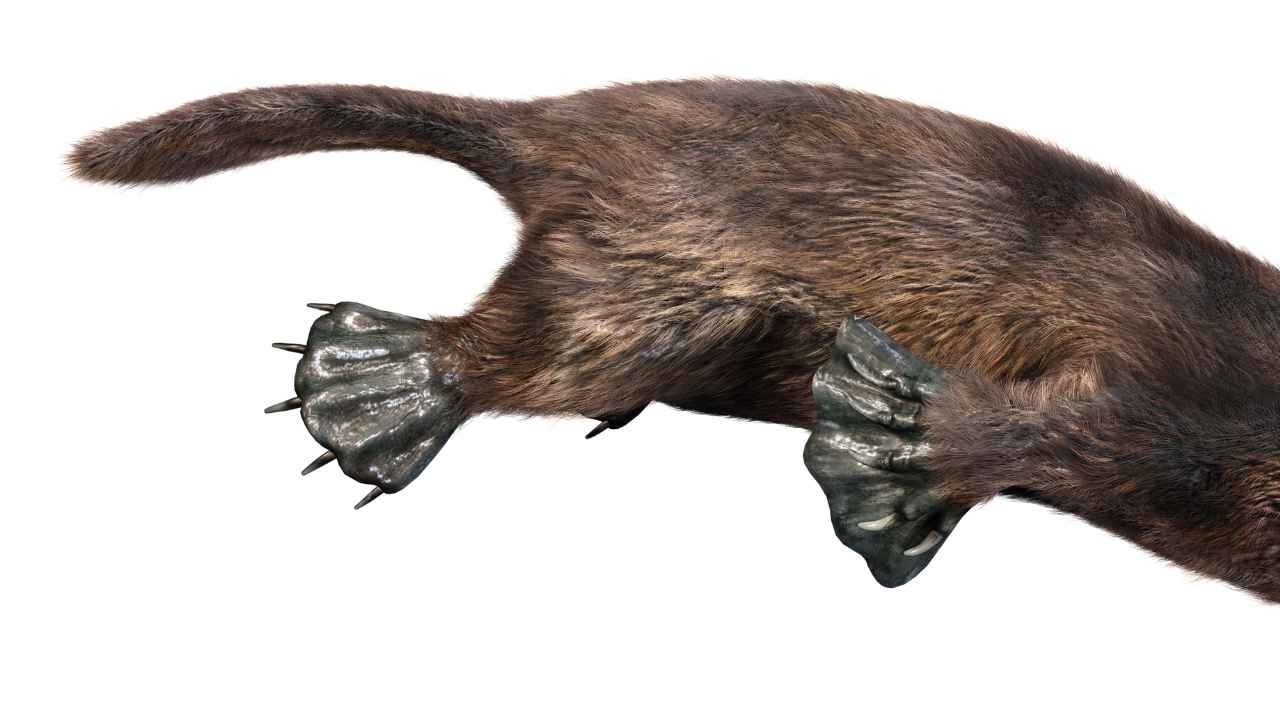
Male platypuses have venomous spurs on their hind rear feet and can deliver strong toxic venom. They are used for defense against predators and competition with other males during the breeding season. Their venom is not deadly to humans but can cause intense pain and swelling.
Mammalian Characteristics
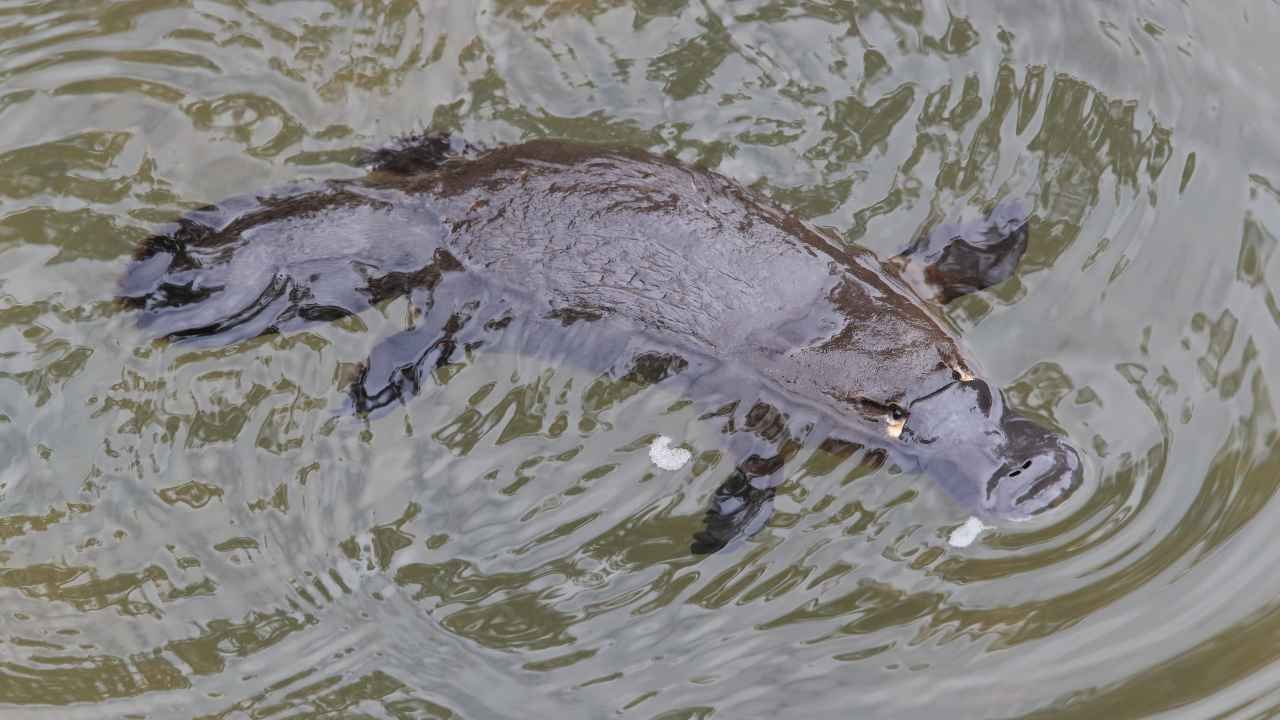
Platypus are egg-laying animals but females have mammary glands that produce milk to feed their young. Platypus lack nipples and the milk is secreted to the offspring through openings in the skin.
Where do Platypus live – Platypus Habitat
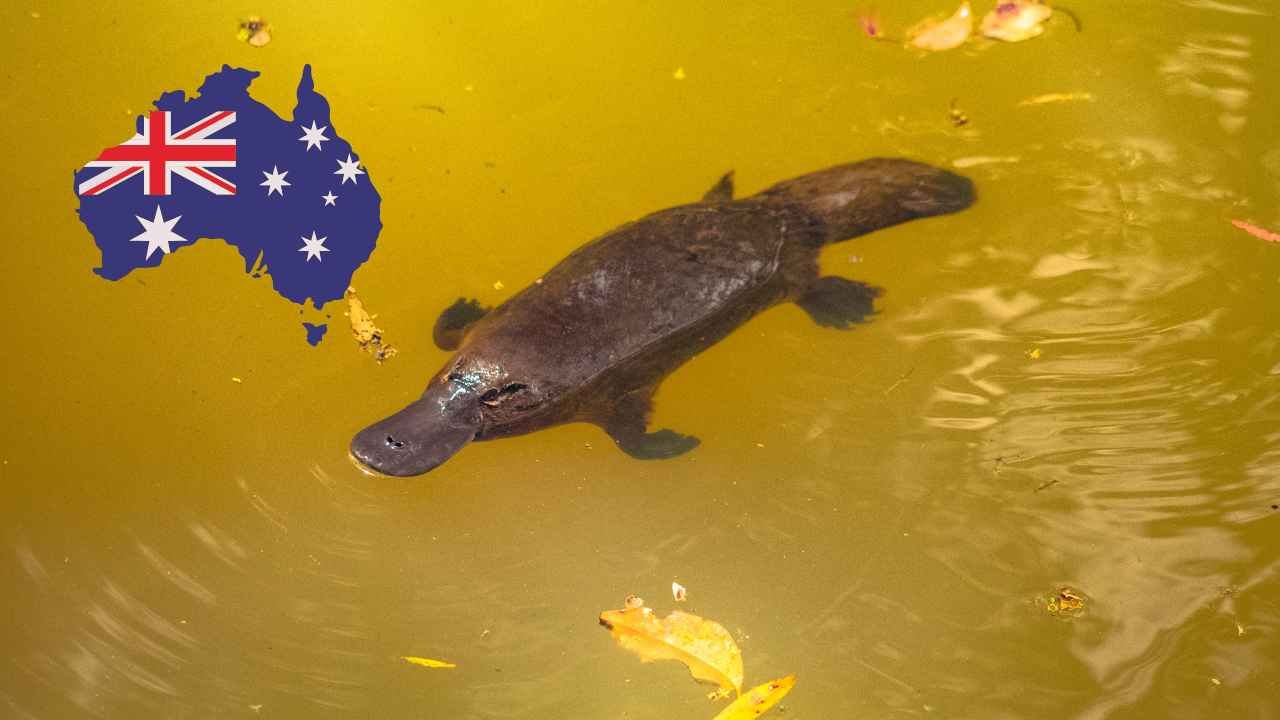
Platypus is endemic to eastern Australia including Tasmania. Their habitat range covers the cold highlands of Tasmania and the Australian Alps to Queensland’s tropical rainforests as far north as the Cape York Peninsula. The inland distribution of platypus is not well-known.
Platypus are semi-aquatic and spend much of their time in water to get food. They usually spend about half of their daytime in freshwater habitats, such as rivers, streams, and lakes. Occasionally, platypuses are observed in saltwater, but their common foraging point is freshwater sources where their electric navigation system is well operative.
Platypus dig straight burrows near the riverbanks about 30 cm above the water level. Their burrows are short with an oval-shaped entrance hole which they usually hide with entangled vegetation. They rest in their burrows and may sleep there for up to 14 hours a day.
Nocturnal And Semiaquatic Life Style
Platypus remain more active during dawn and dusk, they can also be active during the night. Factors like temperature and prey availability affect their nocturnal and crepuscular behavior (active during twilight, or dawn and dusk).
Platypus is well-adapted to a semi-aquatic lifestyle. Their streamlined body and webbed feet make them good swimmers. In water, they use their front feet for steering and paddling while their hind feet and tails for propelling water.
What do Platypus Eat – Platypus Diet
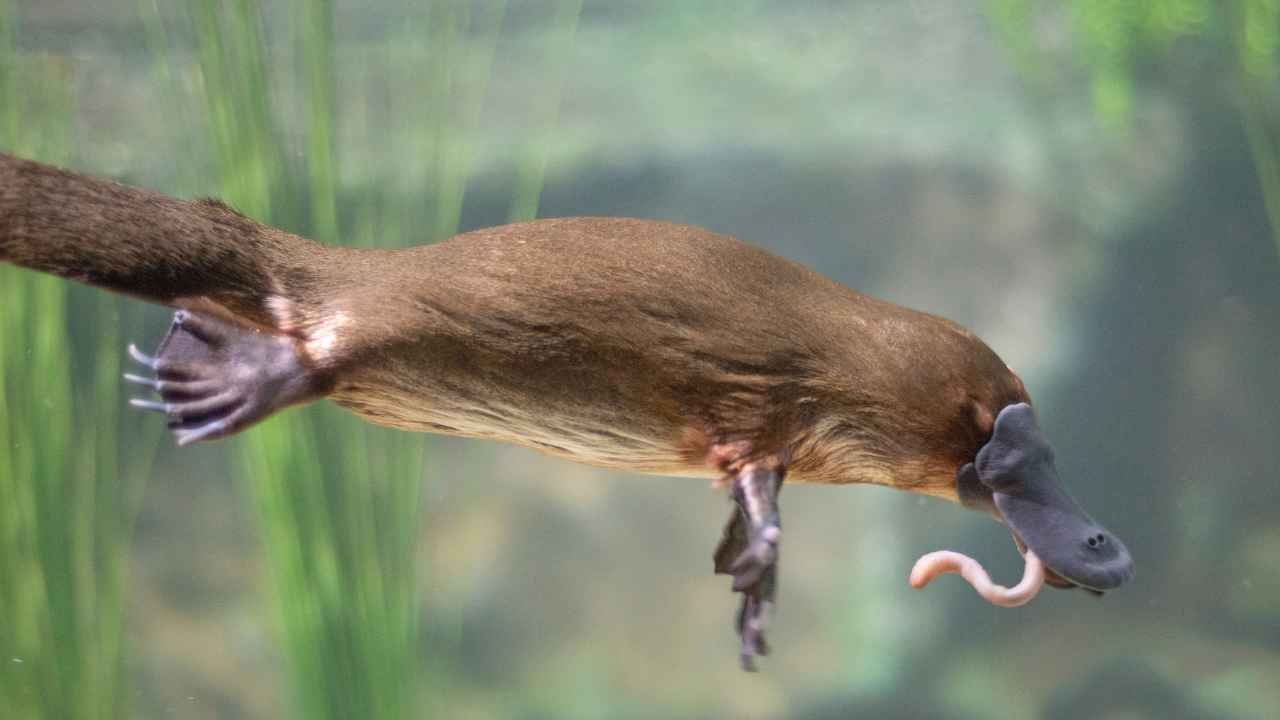
Platypus is carnivorous and eats aquatic invertebrates. Annelid worms, insect larvae, yabby (crayfish), freshwater shrimps, small fish and other small aquatic organisms are their primary prey. The specific types of invertebrates they eat can vary with habitat and season. During the warm season, they may eat abundantly available small flying insects near the water surface. Platypus eat about 20% of their body weight daily, which needs an average of about 12 hours daily to forage.
Electroreception
Despite the Guiana Dolphin, monotremes (platypus and four species of echidnas) are the only mammals that have a sense of electroreception. The electroreception of platypus is the most sensitive of all monotremes.
Platypus bill is covered with sensitive skin that have electroreceptors in the rostrocaudal rows as well as uniformly distributed mechanoreceptors (receptors sensitive to mechanical pressure or distortion). The number of receptors on a platypus bill is around 40,000. Their receptors can detect extremely small electric currents that the muscular contraction of their prey generates. To locate prey, they turn their head saccades and have the best accuracy downwards and outwards.
Foraging Technique
Platypus are well-known for their special foraging technique. When swimming, they close their eyes, ears, and nostrils and depend on their sense of electroreception to locate prey. When they detect potential prey in the river bed, they dig it out with their bill or catch it while swimming. They have special cheek pouches where they store prey before eating. They eat prey when they return to the surface.
How do Platypus Reproduce
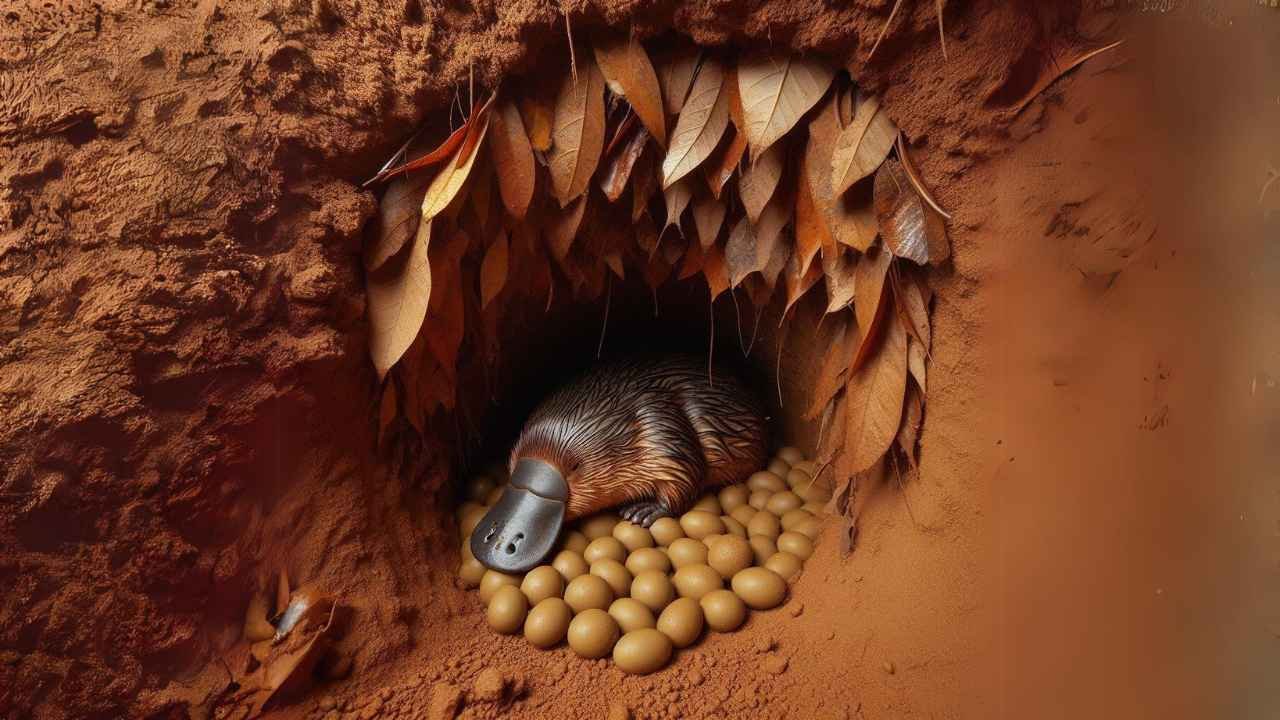
Platypus are egg-laying mammals and have a unique reproductive system and life cycle among mammals. They lay eggs instead of giving birth to living offspring. They reproduce once a year and their breeding season lasts from late winter to early spring (June to October). Male and female mate in the water and fertilization is internal.
Egg-laying and Nesting
Females lay one to three eggs (two eggs are more common). Platypus eggs are leathery and small (about 11 mm in diameter) that resemble reptile eggs. The eggs initially develop within the womb for about 28 days.
Soon after mating, the female builds a deep and up to 20-meters-long nesting burrow in a hidden place near water. She gathers fallen leaves and reeds in the burrow to make a nest for the eggs and eventual hatchlings. Males take no part in digging burrows or nesting.
Incubation and Hatching
The external incubation period of platypus eggs is only about 10 days. The female curls around to incubate her eggs.
After the incubation period, the eggs hatch into blind, hairless, and vulnerable young platypus known as puggles. They have the size of lima beans and are completely helpless. They consume their mother’s milk for three to four months until they start swimming on their own. Platypus lack nipples, so the milk is secreted through pores in the skin and pools in the special grooves in the mother’s abdomen, from where the offspring lap it.
After weaning, the young stay near their mother’s territory. Both male and female platypus sexually mature at the age of about two years.
How long do Platypus live
In the wild, platypuses live for 10 to 15 years, with an average lifespan of 11 years. In captivity, they live for up to 17 years. The usual mortality rate of adult platypus is low.
How do Platypus Communicate

Platypus are not known for elaborate vocalizations and use other non-vocal signals to communicate. They produce some sounds, such as echolocation clicks to navigate and locate prey underwater, soft growls and grunts to communicate with other platypuses (especially during mating or territorial disputes), and squeaks and hisses when they feel threatened or disturbed (particularly when protecting offspring or nests).
For communication, platypus use:
Body Language
Platypus uses body language as a significant way of communication. They use postures, movements, and tactile interactions to convey information between individuals.
Chemical Communication
Platypus use scent glands located in their hind limbs to mark their territories. Through scent marking, individuals exhibit their presence and establish territories without direct interaction.
Predators Of Platypus
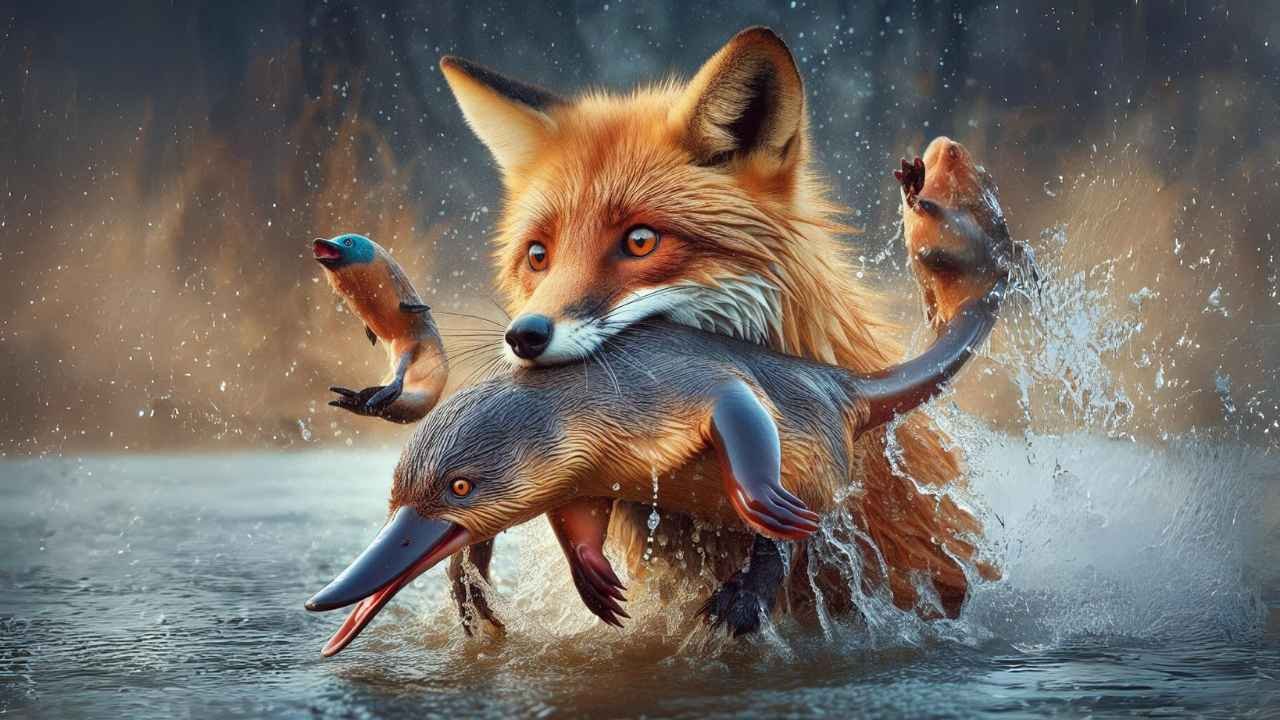
Adult platypuses are well-adapted to their environment and have few natural threats, but still have some predators. Young individuals and eggs are especially vulnerable. Their main potential predators are:
- Birds of prey
- Water rates
- Foxes
- Feral cats
- Snakes
Population, Conservation Status, And Threats
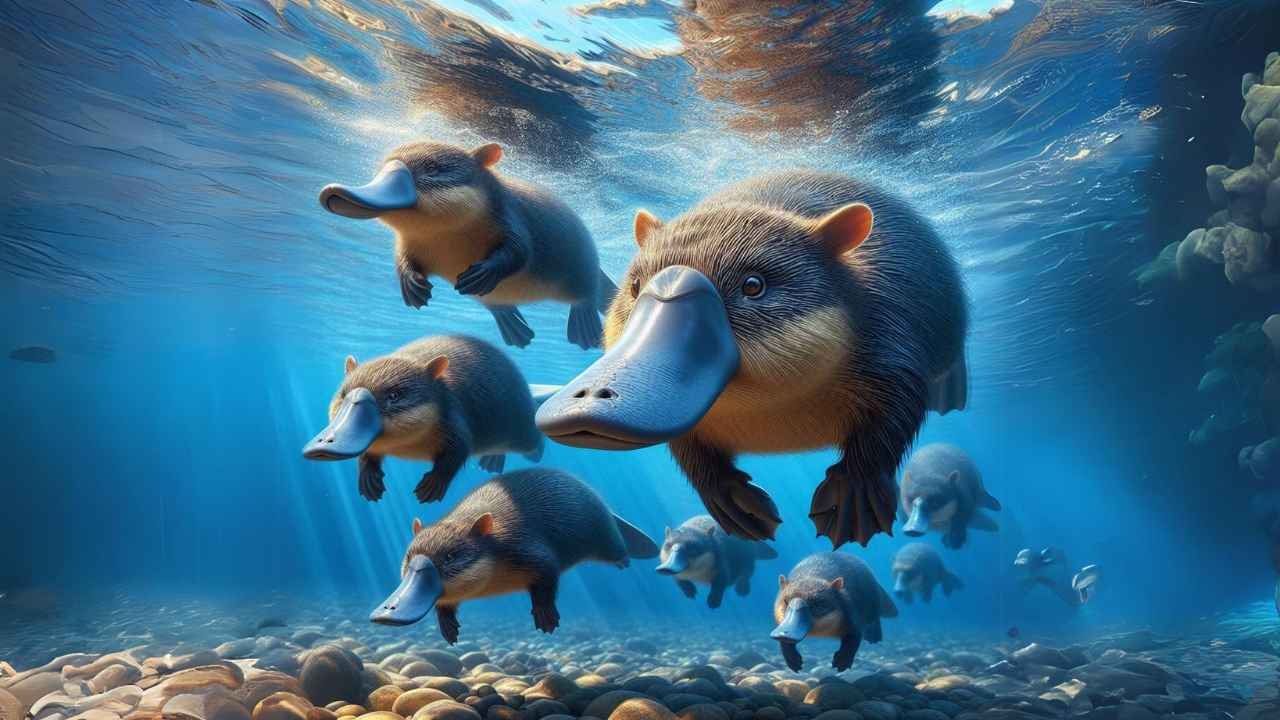
Population
The population of platypus is estimated as up to 300,000 individuals.
Conservation Status And Threats
The conservation status of platypus on the IUCN Red List is “Near Threatened”. It is protected by law under the act of National Parks and Wildlife Act 1972.
The main threats to their survival include:
- Habitat Destruction
Human activities like deforestation and extraction of water resources destroy the natural habitat of platypus. Other reasons for their habitat destruction include altered river flow and severe drought.
- Pollution
Pollution from agricultural runoff, industrial discharge, and sewage contaminate river water where platypus hunt. Pollution can harm their health and can reduce the availability of their prey.
- Climate Change
Climate change poses various threats to platypus, including altered temperature and precipitation patterns, changes in the river flow, sea level rise, and increased frequency of extreme weather events. These changes affect the distribution, behavior, and survival of the platypus and their prey species.
- Invasive Species
Introduced predators in the habitat of platypus such as foxes, feral cats, and dogs not only prey on them and their eggs but also compete with them for food and habitat resources.
- Bycatch
Unintentional trapping in fishing nets, traps, and fishing gears is a serious threat to platypus populations, especially in regions where commercial and recreational fishing activities overlap with platypus habitat.
- Human Disturbance
Human activities such as recreational boating, trampling of riverbanks, and disturbance of nesting sites can disturb the behavior of platypuses and cause a reduction in their reproductive success.
Cultural Significance Of Platypus
Platypus is the icon animal of Australia and is often featured in cultural representations of the country, such as art, literature, and souvenirs. The Australian twenty-cent coin also has the image of platypus.
Aboriginal Australian cultures have their own stories, beliefs, and spiritual connections with platypus. It is featured in their Dreamtime stories and traditions. Some Aboriginal Australians believe platypus is a hybrid of duck and water rat.







Leave a Reply